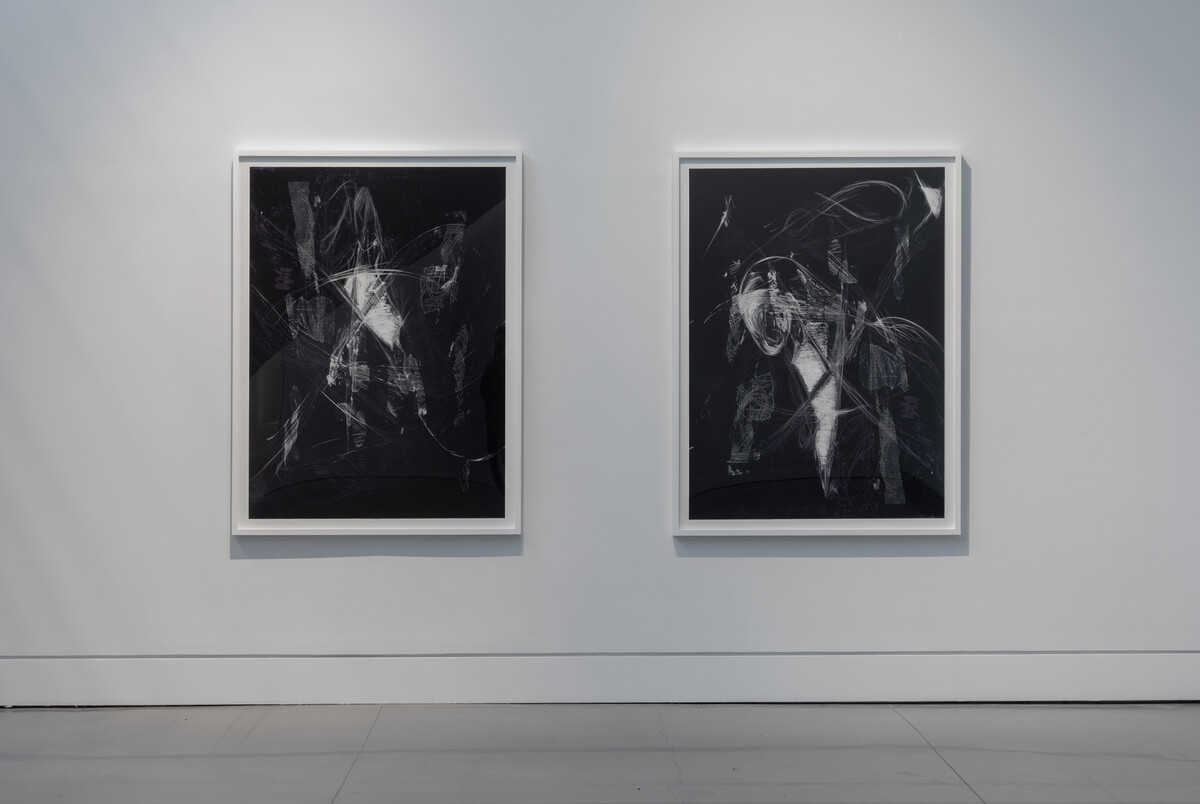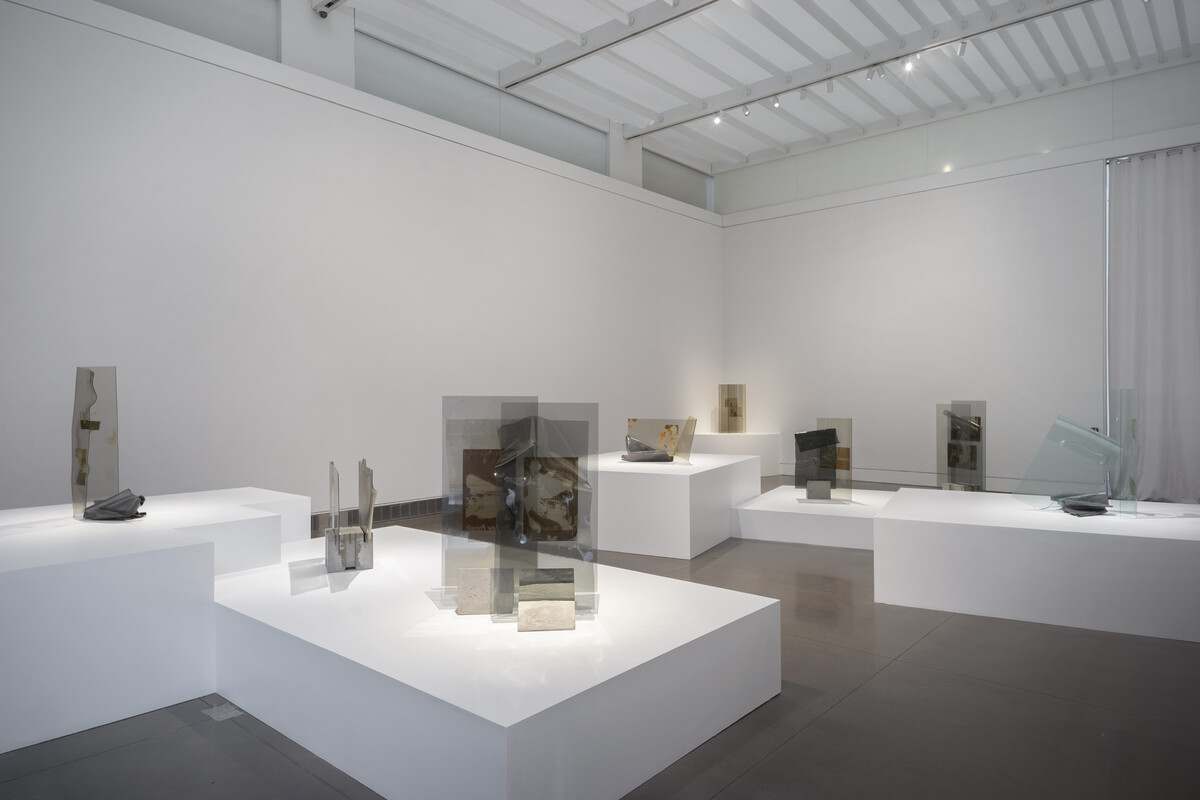
of [a] tomorrow: lighter than air, stronger than whiskey, cheaper than dust is Charisse Pearlina Weston’s first solo museum presentation. The artist’s practice considers and mines Black tactics of refusal which sustain Black life in the face of persistent anti-Black violence. Through the use of various techniques of withholding, repetition, and enfoldment intermingled with poetic, historical, and autobiographical interventions, Weston’s ambitious new work reimagines and posits Black interior life as a central site of Black resistance. For this exhibition, Weston continues her artistic investigation into the material and symbolic uses of glass within architecture, media, and surveillance which reinscribe anti-Black violence. The works utilize glass, canvas, concrete, lead, text, and photographs pulled from various sources and archives, including the Queens Museum’s permanent collection.
The complex spatial and socio-political histories of the site upon which the Museum and Flushing Meadows Corona Park are situated act as the conceptual framework of the exhibition:
On April 4, 1964, the Brooklyn and Bronx branches of the Congress of Racial Equality (CORE), led by Brooklyn chairman Isaiah Brunson, announced their intent to stall hundreds of cars along the access roads and highways leading to the much anticipated 1964-65 New York World’s Fair, located on the grounds of what is now the Museum and Corona Park. This proposed gesture of resistance, meant to represent the ways in which white supremacy prohibits Black life, was met with immediate, widespread backlash from media outlets, government officials, and other civil rights activists. Then NYC Mayor Robert F. Wagner Jr. declared the activists had placed “a gun to the heart of the city.” Although the stall-in never took place as conceived, CORE was successful in disrupting, even if only temporarily, the fair and the city’s psychological landscape: the tens of thousands of would-be fairgoers who had come “to the world of fantasy” were instead made to “[encounter] the world of fact.”*
Spanning two galleries, this exhibition brings together works which represent Weston’s attempts to critically animate the radical possibilities encapsulated by CORE’s threat to stall, to pause, to withhold passage through. Through varied acts of withholding and refusal, the exhibition also considers how such interpositions might reconfigure intimacy and the interior within the context of social unrest. In the show’s first gallery, Weston stages a large-scale spatial intervention comprised of suspended glass panels. The installation, from which the exhibition derives its name, blocks passage from one gallery to the next as a means by which to consider how architecture functions as a spatial and social modifier upon which fantasies of the future, as well as freedom and intimacy, are enacted. Displayed in relation to the installation is a photographic diptych on canvas, etched with glass. The diptych distorts and interlayers autobiographical source material with a map of a counterprotest to the stall-in staged by CORE’s national chairman.

The exhibition’s second gallery includes a series of sculptural works that consider archives of Black resistance and protest across time. Using delicately balanced and transparent media alongside architectural supports, the works create physical acts of reorientation, inversion, and obstruction in response to the ways in which media and public discourse shape perceptions of Black identity and civic protest. Through haptic materiality and abstraction in both language and form, Weston continues her examination of dynamic interplay of architecture, intimacy, and (spatial) violence.
